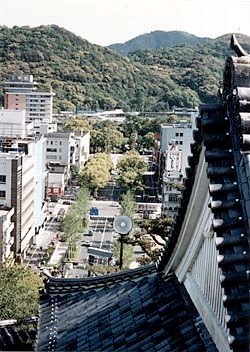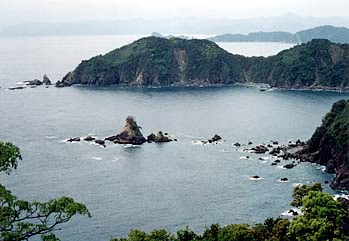































Either way you go, you end up here in Kochi. Kochi people have a reputation for being both fiercely independent and open-hearted, and the city, despite its history of relative isolation, seems to have a reputation for trendiness (at least on Shikoku). The city has a special character in other ways, too, being one of the few that still has streetcars; among Japanese tourists, it's probably most famous for scenic Katsurahama Beach with green pines and a huge statue of Sakamoto Ryoma, the Tosa leader who was a pivotal figure in the Meiji Restoration of 1867. Katsurahama is actually just the rugged edge of a spectacular long white beach that is marvelous in the summertime. This photo was taken from the top of Kochi Castle, and it sort of sums up the city: modern yet rural, with a sunny disposition.
The coastline just to the west of Kochi, in the Tosa area ("Tosa" being both the name of that particular area and the old name for the entire Kochi region) is justly famous for views like this. Here as well, you can take the easy way or the hard way. The easy way is a fairly level road that goes along the inner bay. The more difficult one is the coastal route, where a 20-kilometer section offers one spectacular view after another. It should come as no surprise that KANcycling recommends the road less easily traveled...



